Did you know that phonics learning is developmental?
This means that we need to match our phonics instruction to students’ levels of word knowledge (Bear et al., 2016). In other words, we need to understand what phonics patterns our students already know (and what they don’t know yet). We need to provide instruction that’s neither too difficult nor too easy.
Makes sense, right?
But making this happen in the classroom can be challenging! You might have up to 30 students, so how on earth can you provide “just right” phonics instruction to all of them?!
The reality is this: it’s not possible to achieve perfect, 100% differentiation when you have a large group of students and limited time. However, it IS possible to differentiate your phonics instruction in a way that’s A) manageable, and B) great for your students’ learning.
In this blog post, I’ll share tips for doing just that! (And if you want to learn more about teaching phonics in K-2, check out my free webinar afterward.)

Assess Your Students
The first step to differentiating is to find out what your students need!
Some programs have tests where students read words. Others have tests where students write words.
As long as I have enough time, I prefer to test students on their word reading AND spelling abilities.
Here’s why: Students can usually decode words before they can spell them. In other words, they may be able to read a word on a page by using their phonics knowledge, but they won’t be able to spell it quite yet.
I find it helpful to understand both aspects of their phonics knowledge (both reading and spelling). But if I’m in a time crunch, I at least need to know which phonics patterns students can spell.
If you’d like a free, quick assessment to determine what your Kindergarten, 1st grade, or 2nd grade students know and need to work on, you can use the free assessment in my phonics program. Sign up for the free trial, log in, and look for the free assessment.
That free assessment includes letter sounds, letter names, digraph sounds, and a spelling assessment. (The complete program includes additional assessments to test things like phonological awareness and word reading.)
You can download the free assessment here!
Use Small Group Instruction
Once you know what your students need, you can group them accordingly!
There are several different ways that you can do this. You can have dedicated phonics small groups (my preference) OR add phonics instruction to your guided reading / reading small groups.
I like to set aside a dedicated block for phonics instruction in my classroom. We start with a few short minutes of whole group review, and then break up into small groups. Some students come with me, and some students work independently. We switch at least once (ideally twice, so I can see 3 groups).
There are lots of different ways to set up your phonics small groups. (My free phonics webinar goes over some sample schedules and how-tos for small group instruction.)
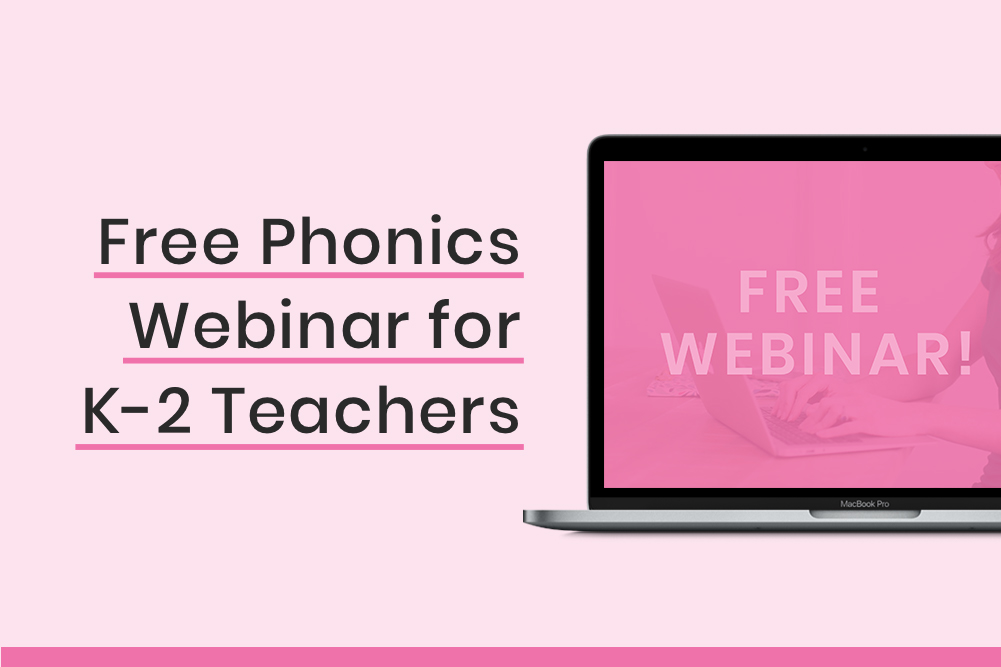
If you choose to add phonics instruction to your existing reading small groups, keep in mind that many students’ phonics knowledge will correspond to their reading level. But for other students, they won’t correspond.
Also, if your core phonics instruction is taking place during your reading small groups, make sure that it gets the attention that it deserves! 3-5 minutes at the end of a guided reading group is not enough phonics instruction for most students.
Use Leveled Materials
Whether you’re teaching phonics in a small group or whole group setting, leveled materials are a lifesaver!!
Here are some examples of leveled materials from my phonics program:
Leveled word sorts:
Word sorts are a great way for students to compare word patterns. But some students are ready for more challenging words, while other students need simpler sorts.
You can have students sort the same patterns but work with different words!

Leveled decodable books:
“Leveled books” usually refer to books that are labeled with a letter or number, like A, B, C, etc. They’re typically viewed as different from “decodable books.” Decodable books are books that are controlled for specific phonics patterns and words that students should know.
In From Sounds to Spelling, we use lots of decodable books and passages. These texts help students practice the phonics patterns and high frequency words that they’re learning. However, a certain decodable text might be great for some students but too difficult for others!
For this reason, the majority of the texts in the program actually include 2 different levels. There is a “regular” level and an “easier” level for most texts.
The easier version of the text typically includes shorter sentences, fewer challenging words, and (when applicable) fewer multi-syllabic words.
Here’s a 1st grade example:
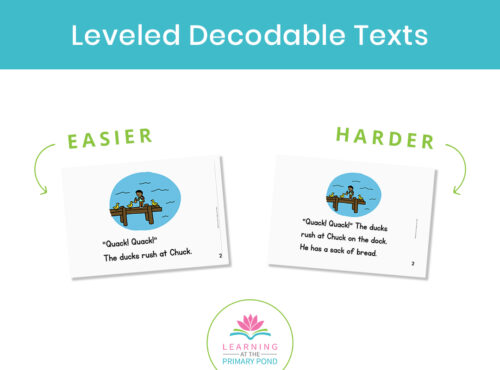
You might also differentiate by using different games / activities for independent practice (From Sounds to Spelling has multiple options per week), different word lists for students to practice reading, etc.
Here’s a FREE resource you could use to differentiate – students could all be doing a sort, but just working on different phonics skills: “Free Phonics Sorts for K-2“
Leveled materials make differentiation a whole lot more manageable, even if most of your phonics instruction takes place in a whole group setting!
For more ideas about phonics activities that can easily be differentiated, sign up to watch my free phonics webinar (Make Those Words Stick: Phonics Routines in K-2).
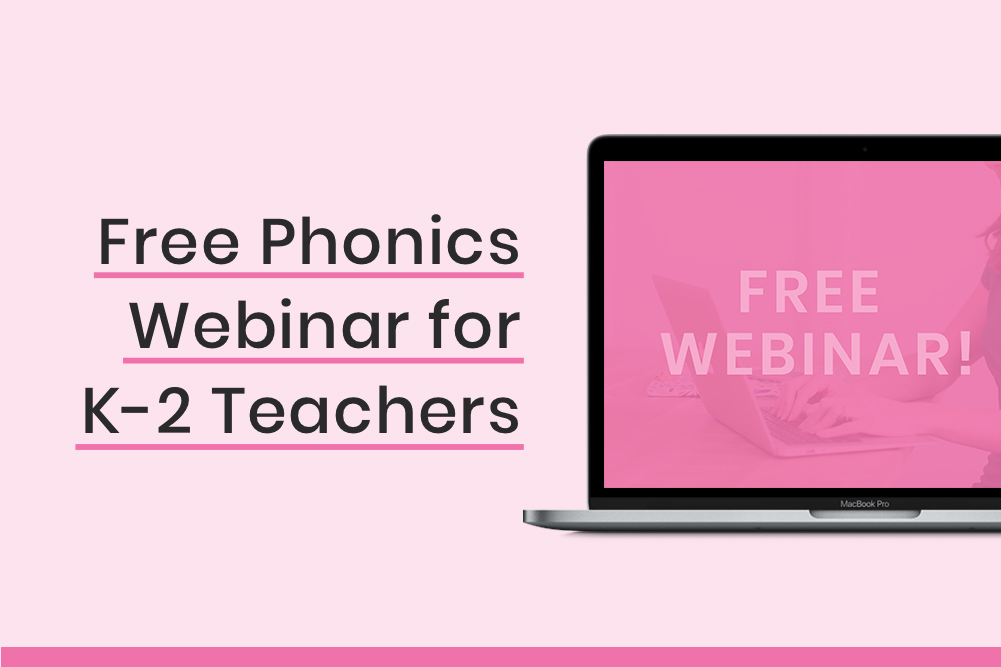
Conclusions
Like with most things in life, “perfect is the enemy of good.” In other words, don’t scrap differentiation altogether just because your system isn’t perfect!
For more support with teaching phonics and setting up your weekly routines, don’t forget to check out my free online workshop about teaching phonics in K-2.
Happy teaching!
References
Bear, D. R., Invernizzi, M., Templeton, S., & Johnston, F. (2016). Words Their Way: Word Study for Phonics, Vocabulary, and Spelling Instruction (6th ed.). Pearson.



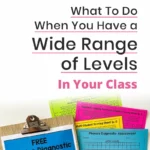

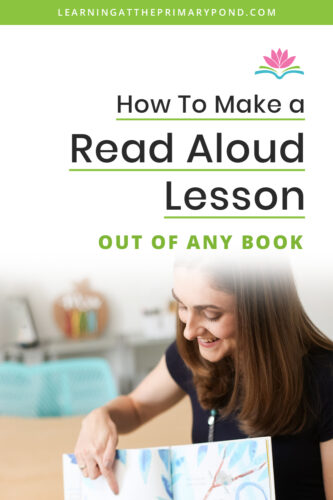








I’d love to have tips to help me do a better job of differentiating instruction. I often struggle in this area.
It can definitely be a struggle! This post is a good place to start, and more are coming in the next week or so! 🙂
This was really helpful. during these Covid times it is becoming tricky how to deifferentiate and assess students during a zoom meet. I am planning to assess 2 students at a time. Still trying to figure it out.
There are so many things to figure out right now! Sounds like you’ve got a good game plan to start with though. 🙂